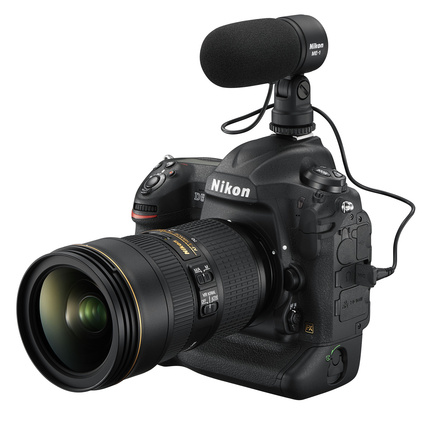Nikon D5 Review
This test is dedicated to a very unusual camera. We admit that such news do not come to our editorial office so often. It's about a heavyweight among DSLRs, a top-end reporting camera in the Nikon lineup . Have you already guessed? Of course, today we shoot on the Nikon D5 !NIKON D5 / Nikon AF-S Nikkor 70-200mm f / 2.8G ED VR II Settings: ISO 800, F11, 1/400 s, 200.0 mm equiv.Download RAW
Such cameras are called Olympic, because they are updated before the Olympics. The two largest manufacturers of DSLRs traditionally rely on professional photographers and news agencies who are ready to buy the most advanced technology for large-scale news events. However, a couple of years ago Nikon himself violated the established tradition by releasing the Nikon D4s model “out of schedule”, but in 2016 he returned the status quo.
Get a quote Nikon D5
Let's see what has changed in the new camera, how can it surprise photographers? But what remains unchanged?
The first and main thing that does not go away over the years is protection and ergonomics. The cameras of the “Olympic” class are designed in such a way that an experienced reporter, picking up a novelty, even in complete darkness could find all the buttons in the usual places and take that very unique picture.
In the dark, you can turn on the backlight not only on the display, but also on the buttons on the camera.
The EXPEED 5 processor is paired with the sensor. Little is known about this gray cardinal of image processing - only the name. But we know that it is the processor that is responsible for the speed of the camera. And here Nikon D5 is on top!
Even with a very short press of the shutter button, the Nikon D5 manages to take a few shots, from which you can then choose the most successful.
NIKON D5 / Nikon AF-S Nikkor 70-200mm f / 2.8G ED VR II Settings: ISO 400, F6.3, 1/1250 s, 195.0 mm equiv.Download RAW
NIKON D5 / Nikon AF-S Nikkor 70-200mm f / 2.8G ED VR II Settings: ISO 400, F6.3, 1/1250 s, 195.0 mm equiv.
NIKON D5 / Nikon AF-S Nikkor 70-200mm f / 2.8G ED VR II Settings: ISO 400, F6.3, 1/1250 s, 195.0 mm equiv.
NIKON D5 / Nikon AF-S Nikkor 70-200mm f / 2.8G ED VR II Settings: ISO 400, F6.3, 1/1250 s, 195.0 mm equiv.
NIKON D5 / Nikon AF-S Nikkor 70-200mm f / 2.8G ED VR II Installations: ISO 400, F6.3, 1/1250 s, 195.0 mm equiv.
Multi-CAM 20K autofocus module with 153 phase focusing points.
WT-6 module.
But the classic Ethernet, so necessary at major sporting events, is present. By the way, its speed has increased one and a half times compared to the Nikon D4s and now amounts to 400 MB / s.


